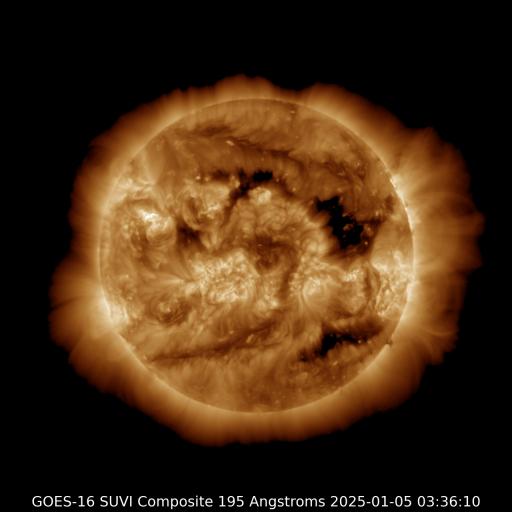Viewing archive of Saturday, 22 December 2018
Daily bulletin on solar and geomagnetic activity from the SIDC
Issued: 2018 Dec 22 1230 UTC
SIDC Forecast
Solar flares
Quiet conditions (<50% probability of C-class flares)
Geomagnetism
Quiet (A<20 and K<4)
Solar protons
Quiet
| 10cm flux | Ap | |
|---|---|---|
| 22 Dec 2018 | 071 | 002 |
| 23 Dec 2018 | 071 | 005 |
| 24 Dec 2018 | 071 | 006 |
Bulletin
The Sun is currently spotless and did not produce any B class flares or higher over the past 24 hours. The chance for a C flare in the next 24 hours is estimated low. No Earth-directed CMEs were detected in available coronagraph imagery.
The greater than 10 MeV proton flux was at nominal levels over the past 24 hours, and is expected to stay at nominal levels for the next 24 hours.
The solar wind speed near Earth as registered by DSCOVR gradually decreased from about 500 to 400 km/s over the past 24 hours, following the influence of a solar wind stream associated with an isolated negative polarity coronal hole. The Interplanetary Magnetic Field (IMF) fluctuated between 2 and 5 nT. Bz varied between 3 and -3 nT.
Quiet to unsettled geomagnetic conditions (K Dourbes between 0 and 2; NOAA Kp between 0 and 1) were registered in the past 24 hours. Quiet geomagnetic levels are expected over the next 24 hours.
Today's estimated international sunspot number (ISN): 000, based on 17 stations.Solar indices for 21 Dec 2018
| Wolf number Catania | 000 |
| 10cm solar flux | 071 |
| AK Chambon La Forêt | 008 |
| AK Wingst | 006 |
| Estimated Ap | 004 |
| Estimated international sunspot number | 000 - Based on 15 stations |
Noticeable events summary
| Day | Begin | Max | End | Loc | Strength | OP | 10cm | Catania/NOAA | Radio burst types | |
|---|---|---|---|---|---|---|---|---|---|---|
| None | ||||||||||
Provided by the Solar Influences Data analysis Center© - SIDC - Processed by SpaceWeatherLive
All times in UTC
Current data suggests there is a moderate possibility for aurora to appear at the following high latitude regions in the near future
Gillam, MB, Yellowknife, NTCurrent data suggests there is a slight possibility for aurora to appear at the following high latitude regions in the near future
Edmonton, AB, Iqaluit, NU, Saskatoon, SK, Whitehorse, YTAnchorage, AK, Juneau, AK
Latest news
Latest forum messages
Support SpaceWeatherLive.com!
A lot of people come to SpaceWeatherLive to follow the Sun's activity or if there is aurora to be seen, but with more traffic comes higher server costs. Consider a donation if you enjoy SpaceWeatherLive so we can keep the website online!

Latest alerts
06:30 UTC - Type II Radio Emission
Begin Time: 08/04/2025 05:53 UTC Estimated Velocity: 456km/sec.
05:15 UTC - Hemispheric Power Index
The OVATION model predicts the Hemispheric Power Index to reach 50GW at 06:02 UTC
00:55 UTC - Coronal hole
A southern hemisphere coronal hole is facing Earth. Enhanced solar wind could arrive in ~3 days
Monday, 7 April 2025
20:45 UTC - Geomagnetic activity
Active geomagnetic conditions (Kp4) Threshold Reached: 20:39 UTC
17:33 UTC - Hemispheric Power Index
The OVATION model predicts the Hemispheric Power Index to reach 51GW at 18:18 UTC
Space weather facts
| Last X-flare | 2025/03/28 | X1.1 |
| Last M-flare | 2025/04/05 | M1.0 |
| Last geomagnetic storm | 2025/04/06 | Kp5 (G1) |
| Spotless days | |
|---|---|
| Last spotless day | 2022/06/08 |
| Monthly mean Sunspot Number | |
|---|---|
| March 2025 | 134.2 -20.4 |
| April 2025 | 151.3 +17.1 |
| Last 30 days | 135.2 -4.5 |




